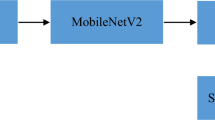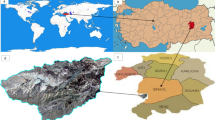Abstract
Soil classification is one of the major affairs and emanating topics in a large number of countries. The population of the world is rising at a majorly rapid pace and along with the increase in population, the demand for food surges actively. Typical techniques employed by the farmers are not adequate enough to fulfill the increasing requirements and therefore they have to hinder the cultivating soil. For proper crop yield, farmers should be aware of the correct soil type for a particular crop, which affects the increased demand for food. There are various laboratory and field methods to classify soil, but these have limitations like time and labor-consuming. There is a requirement of computer-based soil classification techniques which will help farmers in the field and won’t take a lot of time. This paper talks about different computer-based soil classification practices divided into two streams. First is image processing and computer vision-based soil classification approaches which include the conventional image processing algorithms and methods to classify soil using different features like texture, color, and particle size. Second is deep learning and machine learning-based soil classification approaches, such as CNN, which yields state-of-the-art results. Deep learning applications mostly diminish the dependency on spatial-form designs and preprocessing techniques by facilitating the end-to-end process. This paper also presents some databases created by the researchers according to the objective of the study. Databases are created under different environmental and illumination conditions, using different appliances such as digital cameras, digital camcorder, and a smartphone camera. Also, evaluation metrics are briefly discussed to layout some graded measures for differentiation. This review serves as a brief guide to new researchers in the field of soil classification, it provides fundamental understanding and general knowledge of the modern state-of-the-art researches, in addition to skillful researchers considering some dynamic trends for future work.












Similar content being viewed by others
References
Ajdadi FR, Gilandeh YA, Mollazade K, Hasanzadeh RPR (2016) Application of machine vision for classification of soil aggregate size. Soil Tillage Res 162:8–17
Aydemir S, Keskin S, Drees LR (2004) Quantification of soil features using digital image processing (DIP) techniques. Geoderma 119:1–8
Aziz MM, Ahmed DR, Ibrahim BF (2016) Determine the Ph. Of soil by using neural network based on Soil’s colour. Int J Advanced Res Comput Sci Software Eng 11:51–54
Azizi A, Gilandeh YA, Mesri-Gundoshmian T, Saleh-Bigdeli AA, Moghaddam HA (2020) Classification of soil aggregates: a novel approach based on deep learning. Soil Tillage Res 199:104586
Barman U, Choudhury RD (2020) Soil texture classification using multi-class support vector machine. Inf Process Agric 7(2):318–332
Barman U, Choudhury RD, Talukdar N, Deka P, Kalita I, Rahman N (2018) Predication of soil pH using HSI colour image processing and regression over Guwahati, Assam, India. Journal of Applied and Natural Science 10(2):805–809
Barman U, Choudhury RD, Uddin I (2019) Predication of Soil pH using K mean Segmentation and HSV Color Image Processing. 6th Int. Conf. Comput. Sustain. Glob. Dev. INDIACom.
Bogrekci I, Godwin RJ (2007) Development of an image-processing technique for soil tilth sensing. Biosyst Eng 97:323–331
Botelho M, Dalmolin R, Pedron F, Azevedo A, Rodrigues R, Miguel M (2006) Color measurement in soils from Rio Grande do Sul state with Munsell charts and by colorimetry. Cienc Rural 36:1179–1185
Breul P, Gourves R (2006) In field soil characterization: approach based on texture image analysis. Journal of Geotechnical and Geoenvironmental Engineering 132(1):102–107
Brungard CW, Boettinger JL, Duniway MC, Wills SA, Edwards TC (2015) Geoderma machine learning for predicting soil classes in three semi-arid landscapes. Geoderma 239–240:68–83
Chandan Thakur R (2018) Recent Trends Of Machine Learning In Soil Classification: A Review. International Journal of Computational Engineering Research. 25–32.
Chu J, Guo Z, Leng L (2018) Object detection based on multi-layer convolution feature fusion and online hard example mining. IEEE Access 6:19959–19967
Chung SO, Cho KH, Cho JW, Jung KY, Yamakawa T (2012) Soil texture classification algorithm using RGB characteristics of soil images. J Fac Agric Kyushu Univ 57:393–397
de O. Morais PA, Souza DM, de M. Carvalho MT, Madari BE, de Oliveira AE (2019) Predicting soil texture using image analysis. Microchem. J. 146:455–463
DORNIK A, DRĂGUŢ L, URDEA P (2018) Classification of soil types using geographic object-based image analysis and random forests. Pedosphere 28:913–925
Ehret B (2010) Pattern recognition of geophysical data. Geoderma 160(1):111–125
Gurubasava, Mahantesh SD (2018) Analysis of Agricultural soil pH using Digital Image Processing. 6, 1812–1816
Han P, Dong D, Zhao X, Jiao L, Lang Y (2016) A smartphone-based soil color sensor: for soil type classification. Comput Electron Agric 123:232–241
Heung B, Chak H, Zhang J, Knudby A, Bulmer CE, Schmidt MG (2016) Geoderma an overview and comparison of machine-learning techniques for classi fi cation purposes in digital soil mapping. Geoderma 265:62–77
Honawad PSK, Chinchali PSS, Pawar PK, Deshpande PP (2017) Soil Classification and Suitable Crop Prediction. 25–29
Kovačević M, Bajat B, Gajić B (2010) Soil type classification and estimation of soil properties using support vector machines. Geoderma 154:340–347
Leng L, Zhang J (2012) Palmhash code for palmprint verification and protection. 25th IEEE Canadian Conference on Electrical and Computer Engineering (CCECE). IEEE
Leng L, Zhang J (2013) Palmhash code vs palmphasor code. Neurocomput 108(1–2)
Leng L, Zhang J, Xu J, Khan MK, Alghathbar K (2010) Dynamic weighted discrimination power analysis in DCT domain for face and palmprint recognition. International conference on information and communication technology convergence (ICTC). 467–471
Leng L, Zhang J, Chen G, Khan MK, Alghathbar K (2011) Two-directional two-dimensional random projection and its variations for face and palmprint recognition. Int Confer Computation Sci Appl:458–470
Leng L, Zhang S, Bi X, Khan MK (2012) Two-dimensional cancelable biometric scheme. International Conference on Wavelet Analysis and Pattern Recognition. IEEE. pp. 164–169
Leng L, Li M, Teoh ABJ (2013) Conjugate 2DPalmHash code for secure palm-print-vein verification. International congress on image and signal processing (CISP) IEEE. pp. 705–1710
Leng L, Li M, Kim C, Bi X (2017) Dual-source discrimination power analysis for multi-instance contactless palmprint recognition. Multimed Tools Appl 76:333–354
Leng L, Yang Z, Kim C, Zhang Y (2020) A Light-Weight Practical Framework for Feces Detection and Trait Recognition. Sensors 20(9):2644
Ließ M, Glaser B, Huwe B (2012) Geoderma uncertainty in the spatial prediction of soil texture comparison of regression tree and random Forest models. Geoderma 170:70–79
Maniyath SR, Hebbar R, Akshatha KN, Architha LS, Rama Subramoniam S (2018) Soil color detection using Knn classifier. Proc. - 2018 Int. Conf. Des. Innov. 3Cs Comput. Commun. Control. ICDI3C 2018:52–55
Mengistu AD, Alemayehu DM (2018) Soil characterization and classification: a hybrid approach of computer vision and sensor network. Int J Electr Comput Eng 8:989–995
Murti GSRK, Satyanarayana KVS (1971) Influence of chemical characteristics in the development of soil colour. Geoderma 5:243–248
O’Donnell TK, Goyne KW, Miles RJ, Baffaut C, Anderson SH, Sudduth KA (2010) Identification and quantification of soil redoximorphic features by digital image processing. Geoderma 157:86–96
Ok S, Hyun K, Youl K (2012) Texture Classification Algorithm Using RGB Characteristics of Soil Images 57, 393–397
Pethkar S (2018) Classification of soil image using feature extraction. Int J Res Appl Sci Eng Technol 6:819–823
Protz R, Sweeney SJ, Fox CA (1992) An application of spectral image analysis to soil micromorphology, 1. Methods Anal 53:275–287
Rahman SAZ, Mitra KC, Islam SM (2018) Soil classification using machine learning methods and crop suggestion based on soil series. International Conference of Computer and Information Technology (ICCIT). IEEE. pp. 1–4
Rao A, Abhishek JU, Manjunatha GNS, Beham R (2016) Machine Learn Soil Classific Crop Detect 4:792–794
Sharma HK, Kumar S (2018) Soil Classification & Characterization Using Image Processing. 2018 Second International Conference on Computing Methodologies and Communication (ICCMC). pp. 885–890
Shenbagavalli R, Ramar K (2011) Classification of soil textures based on Laws features extracted from preprocessing images on sequential and random windows. Bonfring Int J Adv Image Process 1:15–18
Shenbagavalli R, Ramar K (2014) Feature extraction of soil images for retrieval based on statistics. Int J Comput Appl 88:8–12
Shukla G, Garg RD, Srivastava HS, Garg PK (2018) An effective implementation and assessment of a random forest classifier as a soil spatial predictive model. Int J Remote Sens 39:2637–2669
Sofou A, Evangelopoulos G, Maragos P (2005) Soil image segmentation and texture analysis: a computer vision approach. Geoscience and Remote Sensing Letters 2(4):394–398
Srunitha K, Padmavathi S (2016) Performance of SVM classifier for image based soil classification. Int. Conf. on Signal Processing, Communication, Power and Embedded System. SCOPES: 411–415
Suchithra MS, Pai ML (2020) Improving the prediction accuracy of soil nutrient classification by optimizing extreme learning machine parameters. Inf Process Agric 7(1):72–82
Sudarsan B, Ji W, Adamchuk V, Biswas A (2018) Characterizing soil particle sizes using wavelet analysis of microscope images. Comput Electron Agric 148:217–225
Taghizadeh-Mehrjardi R, Nabiollahi K, Minasny B, Triantafilis J (2015) Comparing data mining classifiers to predict spatial distribution of USDA-family soil groups in Baneh region. Geoderma 253:67–77
Terribile F, FitzPatrick EA (1992) The application of multilayer digital image processing techniques to the description of soil thin sections. Geoderma 55:159–174
VandenBygaart AJ, Protz R (1999) The representative elementary area (REA) in studies of quantitative soil micromorphology. Geoderma 89(3–4):333–346
Wei PG, Sheng WQ (2013). Prediction of soil organic matter using artificial neural network and topographic indicators in hilly areas. Nutr Cycling Agroecosyst. pp. 333–344.
Wu W, Di Li A, He XH, Ma R, Liu H, Bin Liv JK (2018) A comparison of support vector machines, artificial neural network and classification tree for identifying soil texture classes in southwest China. Comput Electron Agric 144:86–93
Yang Z, Leng L, Kim BG (2019) StoolNet for Color Classification of Stool Medical Images. Electronics 8(12):1464
Yu Y, Xu T, Shen Z, Zhang Y, Wang X (2019) Compressive spectral imaging system for soil classification with three-dimensional convolutional neural network. Opt Express 27:23029–23048
Zádorová T, Pení V, Va R, Daniel Ž (2015) Colluvial soils as a soil organic carbon pool in different soil regions. Geoderma 254:122–134
Zhang Y, Hartemink AE (2019) Digital mapping of a soil profile. Eur J Soil Sci 70:27–41
Zhang X, Younan NH, King RL (2003) Soil texture classification using wavelet transform and Maximum Likelihood Approach. 7929–7931
Zhang X, Younan NH, O’Hara CG (2005) Wavelet domain statistical hyperspectral soil texture classification. IEEE Trans Geosci Remote Sens 43:615–618
Zhang Y, Chu J, Leng L, Miao J (2020) Mask-refined R-CNN: a network for refining object details in instance segmentation. Sensors 20(4):1010
Zhao Z, Lien T, Rees HW, Yang Q, Xing Z, Meng F (2008) Predict soil texture distributions using an artificial neural network model 5, 36–48
Funding
This research did not receive any specific grant from funding agencies in the public, commercial, or not-for-profit sectors.
Author information
Authors and Affiliations
Corresponding author
Ethics declarations
Declaration of interest
The authors declare that they have no conflict of interest.
Additional information
Publisher’s note
Springer Nature remains neutral with regard to jurisdictional claims in published maps and institutional affiliations.
Rights and permissions
About this article
Cite this article
Srivastava, P., Shukla, A. & Bansal, A. A comprehensive review on soil classification using deep learning and computer vision techniques. Multimed Tools Appl 80, 14887–14914 (2021). https://doi.org/10.1007/s11042-021-10544-5
Received:
Revised:
Accepted:
Published:
Issue Date:
DOI: https://doi.org/10.1007/s11042-021-10544-5




